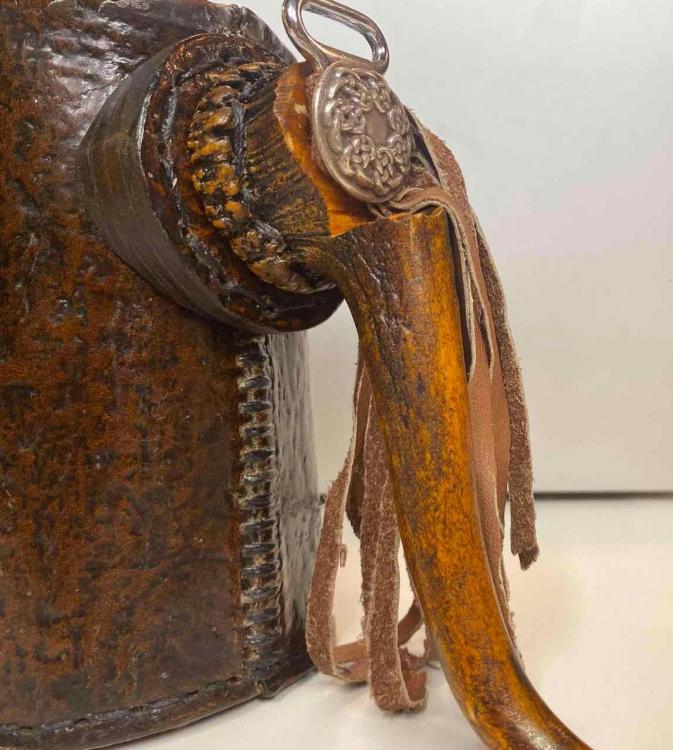-
Posts
196 -
Joined
-
Last visited
Content Type
Profiles
Forums
Events
Blogs
Gallery
Everything posted by maxdaddy
-

COMIC BOOK HOLSTER
maxdaddy replied to hashtagartz's topic in Gun Holsters, Rifle Slings and Knife Sheathes
That's a very creative project and I think it turned out great. -

Neck knife and sheath
maxdaddy replied to Rossr's topic in Gun Holsters, Rifle Slings and Knife Sheathes
That whole project turned out great! That little cast-off comment probably covers up a lot of time and skill. I'd like to hear some details about that part of the projective you don't mind. I might have some spare time in the next month to get my feet wet in something like that. -
That's stunning! Wow.
-
Dan, I'd appreciate any extra detail you are willing to share about that technique. -Dave
-

Your girl will marry you for this bag
maxdaddy replied to mariuspirvu's topic in Patterns and Templates
THat's a neat design. Lots going on there in both the design and construction. I'll be buying the pattern and giving it a try. -
Perfectly executed! The matching cinch D-s and the crossover D in the back are nice design features.
-

Finished the bandolier
maxdaddy replied to Mungo's topic in Gun Holsters, Rifle Slings and Knife Sheathes
Wow that's a lot of rivets! :-). Seriously, that looks great. -

Made a wallet for my nephew
maxdaddy replied to DarrelT's topic in Purses, Wallets, Belts and Miscellaneous Pocket Items
That turned out great. I'm sure he'll love using that and showing it off. -
Wow! As amazing as that looks as a JPEG on my laptop screen I imagine it's even more impressive in person.
-

Notebook Covers
maxdaddy replied to cbossio's topic in Purses, Wallets, Belts and Miscellaneous Pocket Items
That's an interesting solution to circle-cutting. Necessity is a great teacher. -

Just finished this side quiver
maxdaddy replied to dhaverstick's topic in Archery Quivers and Bow Cases
Wow. That's impressive. I hope they appreciate the design and build time you put into that project. -

Purse
maxdaddy replied to justingschneider's topic in Purses, Wallets, Belts and Miscellaneous Pocket Items
Nice. What app/program did you use to make the GIF? -
Good idea. I cemented some 10 ounce to the bottom of some antique clothes irons that I had on-hand. They make great hold-downs and even have built-in handles!
-
@Chakotay Thanks for sharing that build.
-
That cherry wood bottom looks pretty cool. Very random coloring and grain. Your corset mug design looks like it would be a pain to stitch but definitely gets a very feminine 'curve' due to the shapes of the panels.
-
Those are good ideas. I only stamp letters on two or three projects per year, but every time I do I wish that I had something like that jig to keep everything in good alignment. I guess I need to spend an evening putting something like that together and then maybe I'll find more excuses to stamp letters.
-

Tooled Shoulder Bag
maxdaddy commented on AlexOstacchini's gallery image in Gallery- Our Leatherwork
-
I bought the 32oz Envirotex kit from Michaels on the way home from work yesterday and then made a couple of small-ish mugs and a large shot glass for the purpose of sealing with the Envirotex. My results and opinions are mixed and I'll likely end up making a beer bottle cap table top with the rest of the Envirotex. For starters, the Envirotex is not as easy to work with as beeswax. Even with the added necessity of melting the beeswax in a double boiler, I still consider it easier to use for the purposes of sealing a mug. The Envirotex simply takes too long to 'dry' to a point that it stops running and trying to find a level. This is great for the purposes of horizontal surfaces, but no so much for a three-dimensional object like a mug. Secondly, I called the folks at Envirotex (and a nice human answered who knew the product) and asked about the safety of Envirotex. Apparently it's only FDA rated as safe for incidental contact with food, like on a cutting board or the outside of a cup for example. She said that it was not approved for direct food contact or lining the inside of a cup. Hot liquid, like coffee, could soften the product enough to cause some of the nasty stuff to leach back out and into the contents of the cup. I don't get cosmetically perfect, drip-free, seals but have gotten much better results over the last few years by adjusting my techniques. Sloooooow swirls with the mug almost horizontal is the trick. You can watch the wax depositing onto the leather as you work the 'edge' of the wax up closer and closer to the lip of the mug. Then pick a spot and pour back into the melting pot. That's usually when a 'blemish' will appear in the lining. There's a beekeeper here in town that I can buy 10-pound blocks of beeswax from, so that's pretty convenient supply chain. I've not had any trouble with the beeswax other than from physical damage near the opening from dropping. That's the only downside to beeswax in my opinion, it is relatively fragile when compared to the rest of the mug. Maybe pitch is a more durable lining? Where do you get your pitch from? I'd love to try it but I'm not sure what kind of pitch to buy that is safe for direct contact with the drink. The melting technique (double boiler versus direct heat) shouldn't make a difference to the final job. It seems to me that it's either melted or not and how it got to that state shouldn't matter. If the wax gets 'too hot' from the direct heat method I suppose it could be possible that the wax would behave differently, but I don't know. Everything I read on the subject warned about beeswax catching fire if it got too hot, hence the double boiler. Here's some pictures of my first tests with Envirotex as a sealer. This is how I typically do bottoms nowadays. For this one I used some reclaimed rough-sawn barn wood.
-
Those are very unique looking. Is this the Envirotex product that you use? https://www.amazon.com/Environmental-Technology-128-Ounce-Finish-Gallon/dp/B000LNW022?psc=1&SubscriptionId=AKIAILSHYYTFIVPWUY6Q&tag=duckduckgo-osx-20&linkCode=xm2&camp=2025&creative=165953&creativeASIN=B000LNW022
-
The bottoms on the pictured mugs were wet formed to make a 'cup' shape and then shoved up inside the body of the pre-punched mug and stitched. I never got that process down to a consistent repeatable set of steps and each one was a real pain in the butt. I use wood bottoms nowadays. I made a jig for the bandsaw to cut wood circles with angled sides and that saves a TON of time in the process. If by 'smooth outer' you mean 'no visible stitch lines', then you'd probably want to lap/skive and glue the seam. Then yo could use smaller thread and get a smother look. Mine are butted and cross stitched. These mugs were some of the first that I ever made, and since I don't have a source for more antlers, I've considered removing the handles and building another mug for them. I'm sure they would turn out better now that I've got more experience.
-
The waxing technique that I've settled on is: Melt the wax in a double boiler setup Pour it into the mug and swirl around to get consistent coverage Pour the remaining wax back out. Repeat as needed until the desired thickness is achieved As for cleaning after use, I recommend that customers rinse/spray with cool water then gently wipe and drain upside down. No soap or hot water. The whole process with the wax and the hardening of the leather makes a very solid feel, but the wax is susceptible to cracking if dropped or crushed. I've had to re-wax a few, but have also had some luck with setting a damaged mug in the sun for a while and letting the wax soften up and self-seal. That's worked for small cracks in the wax.
-
Thanks... and absolutely! The pictures above were taken prior to the mugs being sealed with beeswax. I apply a pretty thick coating of beeswax which makes them completely water, and beer, tight.
-
Well, it all depends on your definitions of 'good' and 'solid'. I've made several mugs using antler handles and after some early experimentation I came up with the following…. Antler choice: First of all, the antler piece has to be 'right' for the job. I've made some with antler pieces that were just so-so, because I don't have a large selection to choose from, and the end result is never satisfying. You should also consider the safety aspect of it and not make a handle that has upward-facing points. It would be easy to poke yourself in the eye if you're lifting a pointed handle to your face while consuming large quantities of beer and not paying close attention. Also, the nature of antler curvature lends itself to some mugs being 'left-handed' and some 'right-handed'. Construction: Instead of attaching the antler directly to the mug, I attach it to a patch, that is then attached to the mug. I didn't want the body of the mug being directly connected to the handle and the patch provides a bit of strain relief, or shock absorption, if you will. I've made the connecting patch out of hardwood and even glued several pieces of skirting together to about 3/4 inch thickness. The typical patch material that I use, however, is thick leather, like 12-14oz. If wood or a laminated-leather patch is used, you'll need to contour the attaching face of it to fit the shape of the mug since it won’t bend like a flat leather patch will. Attaching the antler to the patch requires that stitching holes be drilled in the antler and then matching holes be punched in the patch. The face of the antler has to be shaped to the contour of the mug for solid contact. Once the holes are drilled in the antler and the patch, you stitch the antler to the patch, and then stitch the patch/antler assembly to the mug. That one sentence will likely involve a lot of broken stitching needles and frustration. Attached are some mugs I made a few years ago, along a few pictures of the process. I haven't made an antler mug in about three years because I don't have an antler source. I'd be willing to buy some of yours if you're willing to part with them and if the price is right. Welcome to the forum, and be sure to post some pictures of your handiwork. Stitching holes and contoured attaching face. Stained: This is the first antler mug I made. Note that the antler is stitched to the thick leather patch which is then stitched to the mug. Second antler mug, pre sealing. This one has a thick leather patch also. Third antler mug. THis was a left-handed mug due to the antler characteristics. Note the laminated leather patch. This was the fourth antler mug that I made. It's got a laminated patch too and I had to cut away some of the antler material because of some damage. I stuck a concho and a hanger hook in the space. THis is the fifth antler mug and is a right-handed mug based on the antler curvature.
-
Thanks for posting a good cheap solution to a common problem for all of us.



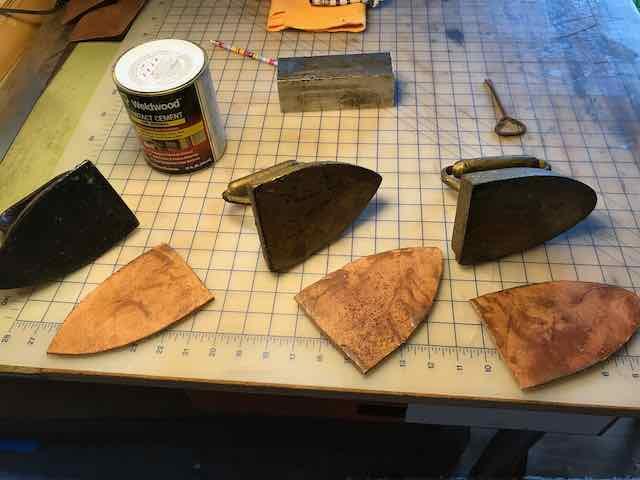
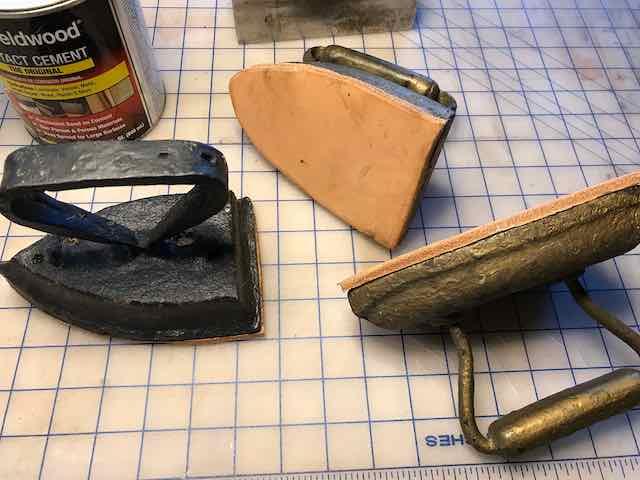
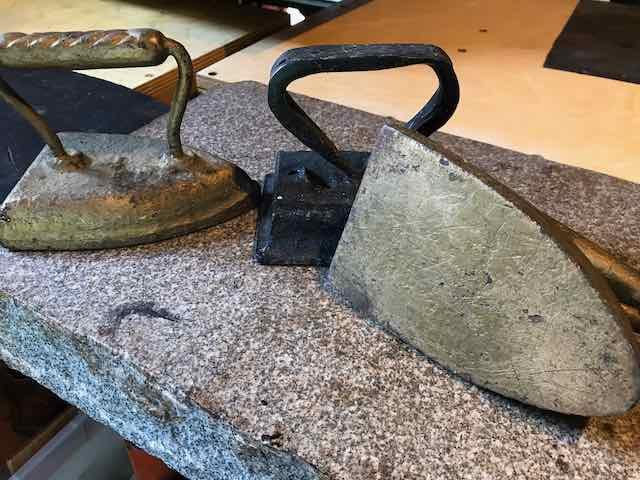

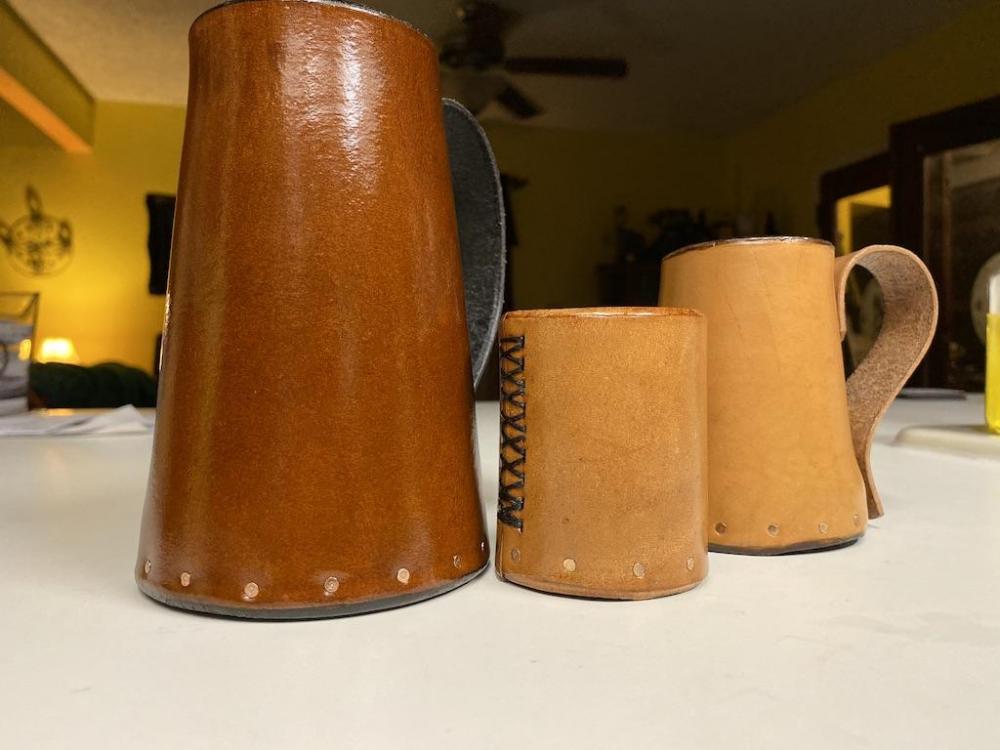
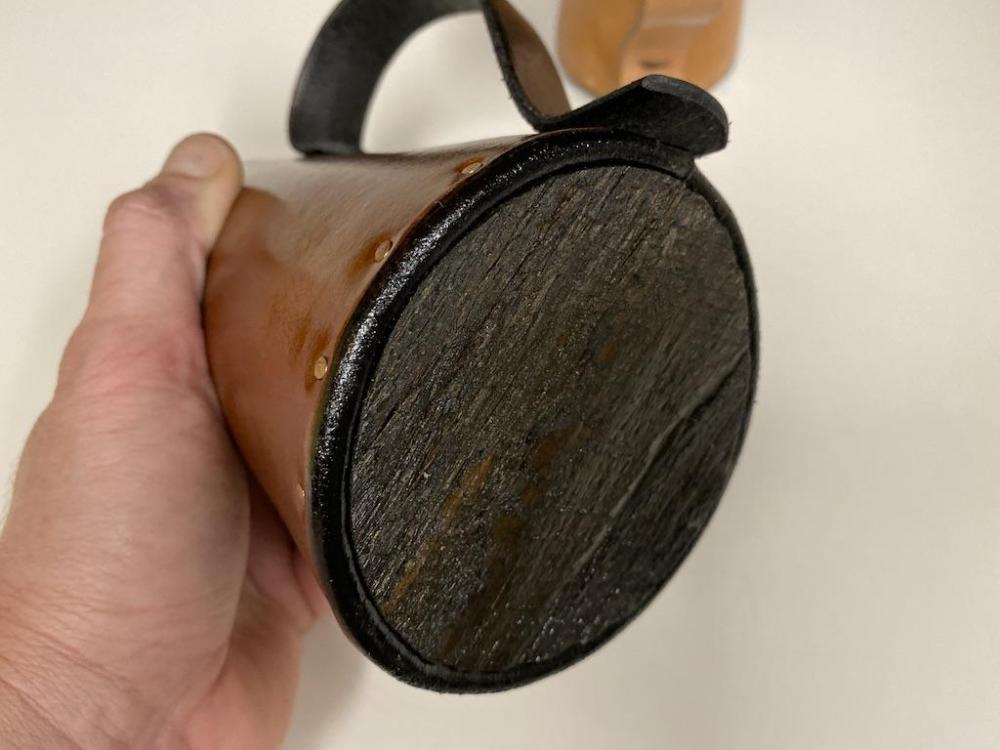
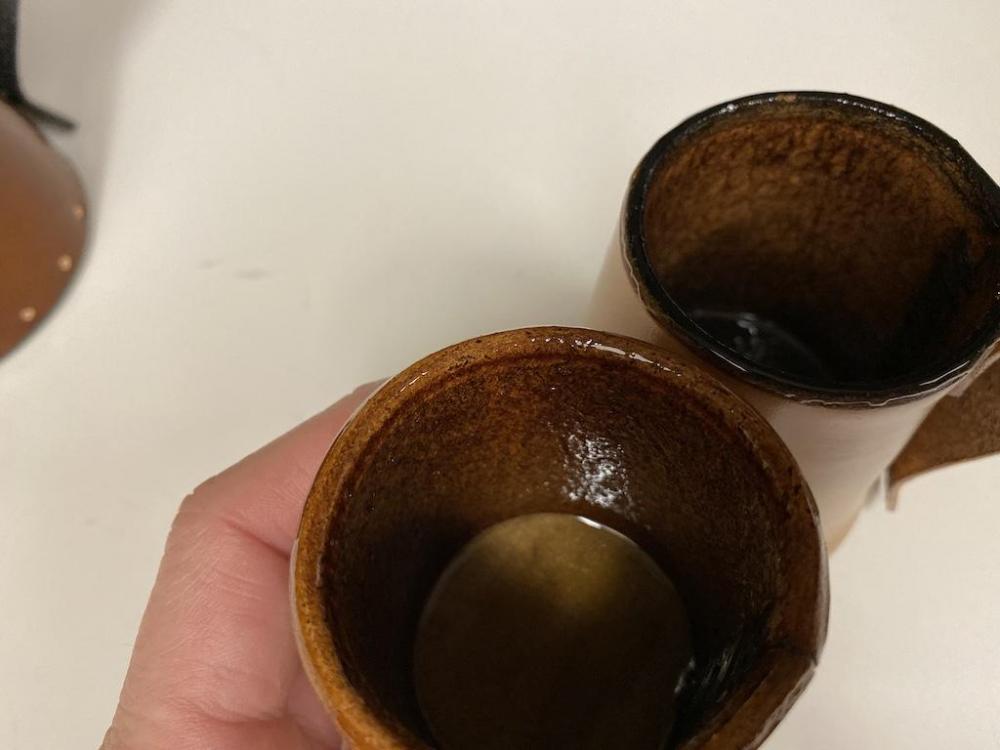

.thumb.jpg.c042857515622692163cf56997b01600.jpg)
.thumb.jpg.7365a6c03e0f9d20db1bc166ba0c58ee.jpg)
.thumb.jpg.c9516736efe6e1136127e310f899f0d2.jpg)
.thumb.jpg.38e683227ca95686e2146fcb6452446c.jpg)
.thumb.jpg.30f52cdc3e32f6c6a111660b9dcfa2c8.jpg)
.thumb.jpg.a600412d326d4506f69045b236669ba6.jpg)
.thumb.jpg.b20f8e6380c3be37695016b4cf417846.jpg)
